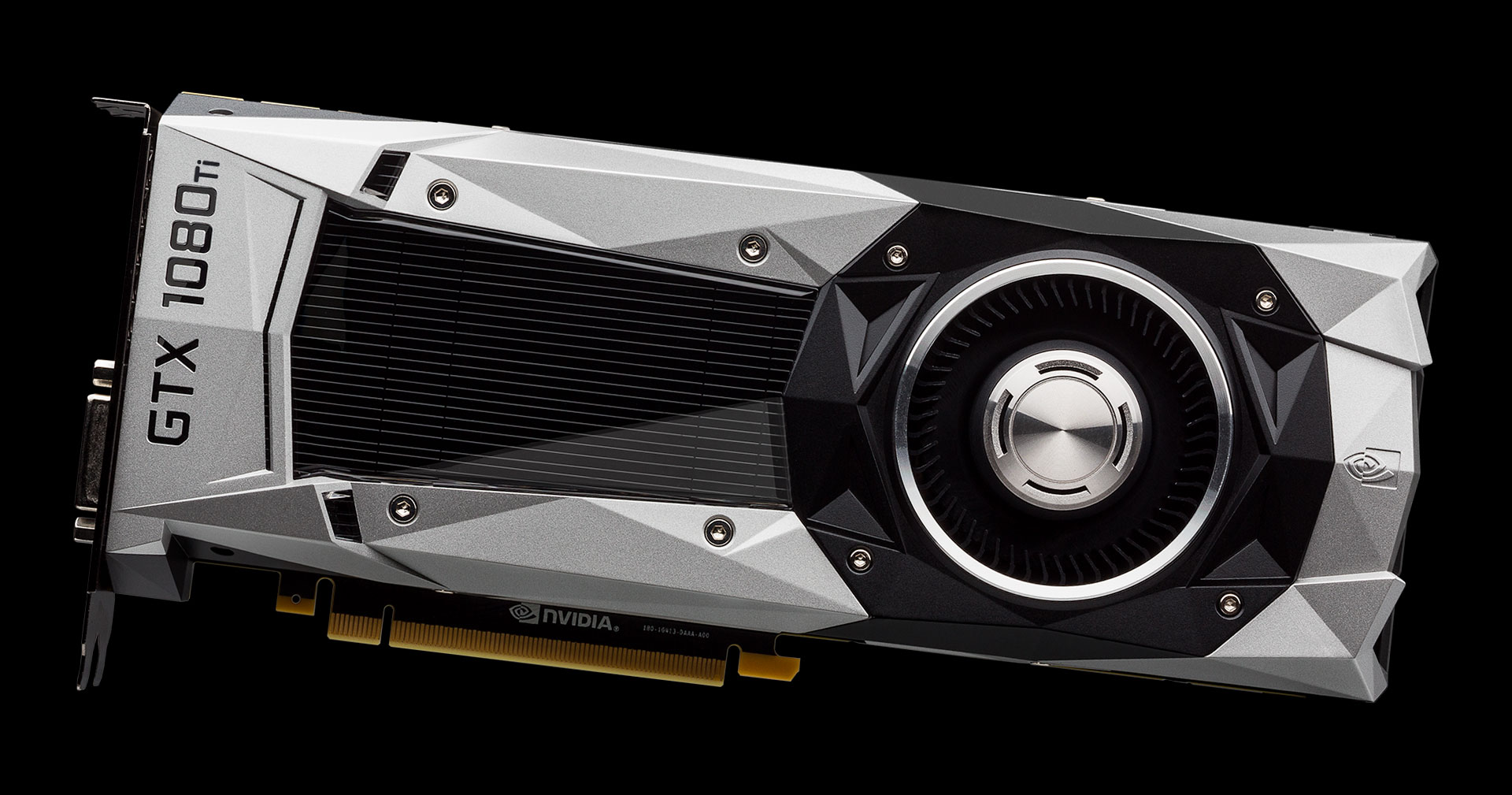Our take on the GTX 1080 Ti 'leaks'
Legitimate leak or just one possible outcome?

Earlier today, there was another apparent 'leak' of Nvidia's GTX 1080 Ti specs, a card many are hoping to see sooner rather than later. Speculation is running wild over whether the information is legit or not, and the included screenshot on OC3D certainly makes it look official. I don't know if the image is real or faked (unlike the above image, which is unabashedly faked), but here's my take.
Whether the information accidentally trickled onto Nvidia's site or not, this is very likely not the final specs for GTX 1080 Ti. I haven't heard any launch date plans from Nvidia (I couldn't say that if I had!), but then the Titan X sort of came out of nowhere so they might call me next week for a surprise announcement. Barring that, there have been several other 'leaks' of GTX 1080 Ti specs, and it's not too difficult to guess that one of them will eventually prove accurate.
Using GP102 is a given, and disabling some of the SM clusters is expected as well. Nvidia followed this same pattern with the GTX 980 Ti where they disabled two SMs (256 CUDA cores) on GM200 compared to the fully enabled GTX Titan X. In theory that should have resulted in about nine percent lower performance, but in practice the difference between those two GPUs is often margin of error (1-2 percent). The question is how many SM clusters will Nvidia disable this round, and the answer to that likely depends as much on AMD as anything.
The new Titan X sports 3,584 cores, or 28 SM clusters, but even that isn't the full GP102 chip. Nvidia's upcoming Quadro P6000 uses GP102's full 30 SMs with 3,840 cores, for example. The Quadro P6000 also has 24GB of 9Gbps GDDR5X memory, so 12GB of 10Gbps GDDR5X seems far more likely for 1080 Ti. And don't tell me that Nvidia is worried about hurting sales of the Titan X, because that wasn't a problem when they launched the GTX 980 Ti at $649 and basically killed off any sane reason to buy the $999 GTX Titan X. So what's the AMD connection?
If we go back to the first GTX Titan GPU, launched in February 2013, Nvidia used their GK110 chip (first seen in the Quadro K6000—sound familiar?), only with one SMX disabled. At the time, Nvidia had the fastest and second fastest GPUs for gaming, and they weren't in any hurry to reduce prices. It wasn't until October of 2013 that AMD finally had a viable competitor to the GTX 780 and Titan.
When AMD launched their first Hawaii GPU, the R9 290X, they laid claim to the title of the fastest gaming GPU, beating out the GTX Titan in most games. Nvidia's response came one month later with the GTX 780 Ti, which had half the memory of the GTX Titan (and 'slow' FP64 support) but included the fully enabled GK110 chip, along with higher clocks, all at a lower price. Nvidia closed the performance gap, and even if they didn't outright win, they at least had a viable claim to the throne.
Back to the present, we know that AMD is prepping Vega 10 for release—it might make it out in 2016, but 'early' 2017 is more probable. Whether they end up calling it the RX 490, RX Fury, or something else isn't important; Vega will come out, and it could be a performance monster. Best indications are it will have 16GB of HBM2 and 4,096 cores, with higher clocks and significantly better performance than Fury X.
The biggest gaming news, reviews and hardware deals
Keep up to date with the most important stories and the best deals, as picked by the PC Gamer team.
Nvidia spoiled the launch of the Fury X by releasing the GTX 980 Ti. They had more memory, overall better performance (even if there are a few cases where Fury X beat the 980 Ti), and the cost of manufacturing GM200 is significantly lower than Fiji. Looking at GP102 and Vega, assuming the rumors are anywhere close to accurate, Nvidia is going to try to do the same again with the 1080 Ti.
If Vega 10 proves to be significantly faster than the Titan X—and don't kid yourself, these companies know each other's plans better than we do—Nvidia could use a fully enabled GP102 with 3,840 cores, and they might do this even if it results in a card that's faster and cheaper than the current Titan X (see 780 Ti). On the other hand, if Vega ends up falling somewhere between the 1080 and the Titan X (which is my bet), we'll see something closer to the above 'leaked' specs with 3,328, 3,456, or perhaps 3,584 cores.
The decision on whether to use 8Gbps GDDR5 or 10 Gbps GDDR5X has already been made, and if Nvidia is actually using GDDR5, they might think they can beat AMD's best shot. Using GDDR5 and not GDDR5X is a bit odd, but considering Titan X is 12GB GDDR5X, Nvidia doesn't have too many options. 6GB GDDR5X would be less than the 1080's 8GB GDDR5X, so 12GB GDDR5 is a potential middle ground.
Assuming the above is correct (or close enough to it), we're looking at 30 percent more CUDA cores and 20 percent more bandwidth than the GTX 1080. The 1080 Ti would still be a beast, and most likely performance will be very close to the Titan X. The 250W TDP limit might also come into play, as it did with the 980 Ti and GTX Titan X.
Regardless of who comes out on top, I'm expecting a GPU throwdown in early 2017.
Jarred's love of computers dates back to the dark ages when his dad brought home a DOS 2.3 PC and he left his C-64 behind. He eventually built his first custom PC in 1990 with a 286 12MHz, only to discover it was already woefully outdated when Wing Commander was released a few months later. He holds a BS in Computer Science from Brigham Young University and has been working as a tech journalist since 2004, writing for AnandTech, Maximum PC, and PC Gamer. From the first S3 Virge '3D decelerators' to today's GPUs, Jarred keeps up with all the latest graphics trends and is the one to ask about game performance.


